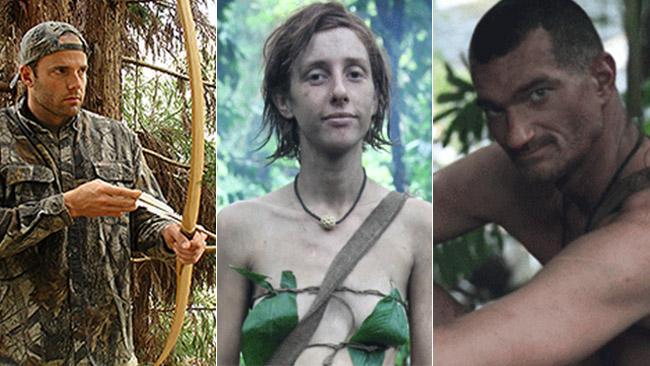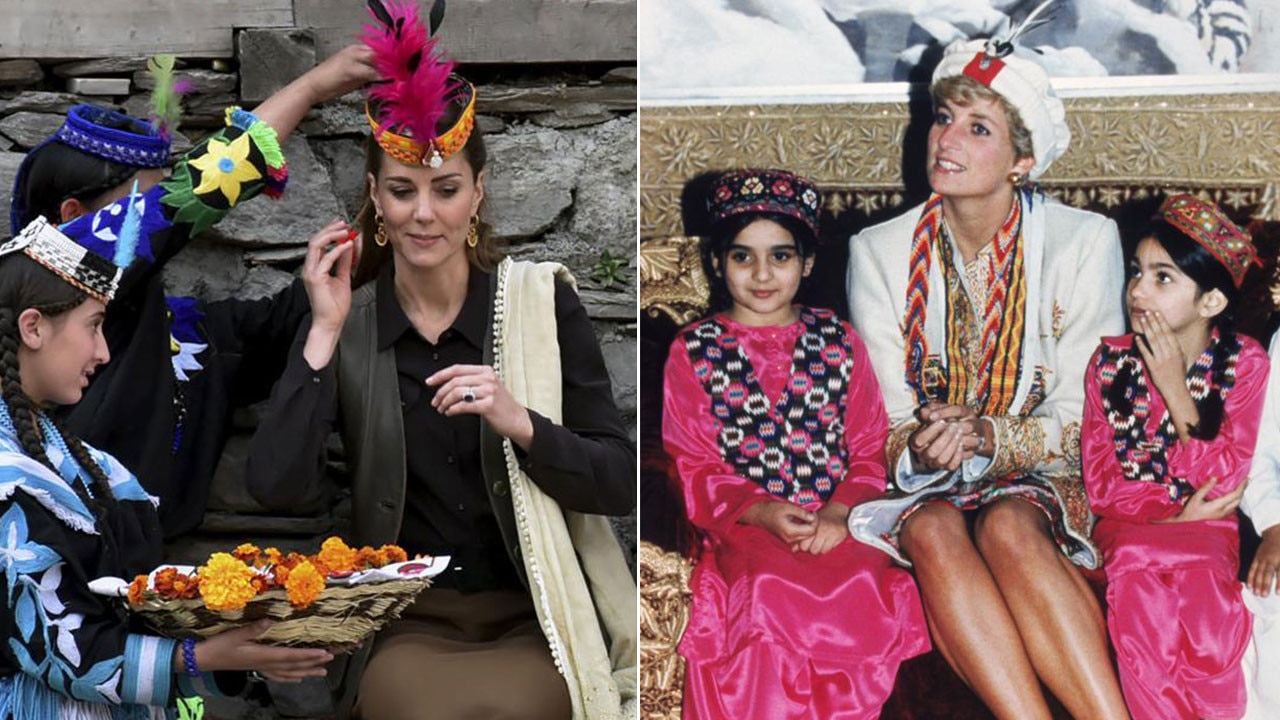No food, no clothes in TV's new frontier with Discovery program Naked and Afraid
NAKED and Afraid is America's most extreme TV show. It's the wilderness as rehab - but has it taken the reality genre too far?

THE REVERBERANT American voiceover announces its premise in tones so freighted with importance that one might almost take the program seriously: "One man and one woman, both experienced survivalists, have chosen to put their skills to the ultimate test. They have no water, no food and no clothes."
The US Discovery Channel's reality series Naked and Afraid has a title designed with the sole apparent purpose of guaranteeing the host of next month's Emmy Awards one certain laugh. Surely Neil Patrick Harris will not miss his chance to jest: "The last time I was naked and afraid was on my prom night." Yet since the show began in June, it has become one of American cable television's most-watched. As Entertainment Weekly put it: "Surprise! Dudes love the stripped-down survival show."
American viewers have long enjoyed shows that make their fellow citizens the victims of Mother Nature at her most petulant. Survivor has been running twice a year on CBS since 2000 and has begat many imitators, of which TNT's 72 Hours - in which teams of strangers are dropped into dangerous habitats - is only the most recent.
Naked and Afraid, however, adds an additional ingredient, one known to those of us who remember Channel 5's Naked Jungle (the presenter Keith "Chipolata" Chegwin called it his "worst career move").
N&A arrives on the Discovery Channel's British cousin in September. This dude has watched its initial two episodes on your behalf. The first to air, Terror in Tanzania, places in the Serengeti, Kellie, a 38-year-old "loner" keen to prove she is no one's housewife, and EJ, a goateed Army vet who believes men are more "logical" than women. It is a long 21 days before they reach their "extraction point" up a distant hill. They take days to light a fire, still more to catch any sort of prey. He sustains a festering foot injury that makes him feel "less than a man". She finds herself sapped of energy, perhaps because she is "going out of my menstrual cycle", and tears up.
The second episode, Punishment in Panama, pairs two twentysomethings - beer-bellied country music singer Clint and taxidermist Laura - in an adventure on a Panamanian jungle island from which they must sail to safety on a home-built raft through shark-slicked waters. It becomes the most unromantic comedy you will ever see. He is excited at the prospect of their "sleepover", reasoning it normally takes "a couple of dates".
She sternly hopes he will be "professional enough" to get past her nudity. Circumstances soon place them both beyond chastity. Sand flies infect her skin with hideous bumps and reduce her feet to bunches of sausages. He, wimpishly drained, concludes the jungle is "telling us to get the f*** out".
The first thing the responsible critic must make clear concerns this programme's nudity. There is none. Rather, there is none that we can see. Throughout their ordeal, Kellie and EJ's modesty is preserved from our prurient gaze behind large clouds of post-edit blur. As for Clint and Laura, they cheat and make vests and skirts for themselves. "Those Leaves/They gathered, broad as Amazonian Targe,/And with what Skill they had, together sowd," as Milton explained of Adam and Eve's sudden shame in Paradise Lost. And, as he might have added: "How unlike to that first naked Glorie as advertised in TV Guide."
The program, naturally, does what it can to sexualise itself. Barrel-chested EJ boasts upon arrival that "most 46-year-olds don't look like this". Kellie is filmed tossing her bra into a jeep. Yet N&A is still probably more arousing for the viewer, frustrated by those electronic hazes, than for the participants. Although nudity when exhibited perpetually dulls - as generations of schoolboys discovered when they chanced upon their first discarded copy of the naturist magazine Health & Efficiency. First out of decorum, then out of boredom, the N&A survivalists scarcely give each other's bodies a second glance.
Discovery must have hoped for more than this. The directors certainly intend viewers to think that, just maybe, an instalment will turn into Non-Celebrity Love Island.
EJ and Kellie meet naked under a giant tree, perhaps, we pray, of knowledge. Tramping barefoot through the jungle, Clint and Laura chance upon a water-apple tree and gnaw deeply into its fruits. "I kind of feel like Adam and Eve," says Laura, who has already, Eve-like, told us she does not give a "shit" about snakes. Whatever knowledge EJ and Kellie receive, it is not carnal, and what Clint perceives as a honeymoon paradise quickly becomes a drenched and infested beach.
Soon, the best these couples hope for is not to hate each other outright. EJ resents Kellie's approach to the Serengeti, her girlish excitement at shells and her wallows in a mud bath. Kellie dislikes EJ's "type A" personality and responds to his commands with: "Yes, sir, sergeant-major."
Although Laura early on flirtatiously cups her breasts with coconut shells ("I am very grateful I am paired with someone with such an awesome sense of humour," her partner responds appreciatively), she soon comes to despise Clint's pessimism about her lobster pot's prospects, his lack of interest in her sea urchin supper, and his general "I-don't-have-the-energy-to-wrestle-an-alligator" wussiness.
The action movie theory that heightened fear means heightened sexual pheromones is heftily refuted by N&A. But how afraid are the participants? The commentary hypes every threat: "Storms can erupt on a biblical scale"; "By night their island paradise shows its darker side: a humid hellhole dominated by swarming insects and crawling, slithering creatures". The contestants self-dramatise, predicting hypothermic deaths for themselves and declaring they are "screwed" or "f***ed" at every setback. But they are at all times accompanied by a film crew instructed to intervene if things get really dangerous. When EJ's foot wound turns nasty - and Naked and Afraid threatens to become Naked and Dead - intervene they surely do, with antibiotics.
No doubt the combination of bodily vulnerability and natural danger was considered, in the meetings in which the show was contrived, to be elemental. I would suggest that if there is something archetypal in the format, then it is cultural rather than evolutionary. The 21 days the contestants spend in their wildernesses are a twist on Christ's 40 days and nights in the desert. They emerge purified. The Serengeti and the Panamanian jungle are hostile versions of Shakespeare's Forest of Arden. If the adventurers do not emerge coupled-up, they at least come out better versions of themselves: EJ is less certain a woman's place is in the home; Laura will never again take food for granted. What is more - and what a modern American dream this is - the four of them end a combined 118lb lighter. This is the wilderness as rehab.
As for the show's USP, its nudity has a cultural neatness about it too. The survivalist movement began in America in the Sixties as a response to the threat of nuclear war and has been sustained by portents of ecological, economic and terrorist disaster ever since. But as America has become more paranoid, it has also become more declamatory and self-exposing. Thirteen years ago, Survivor turned survivalism into showbusiness. Naked and Afraid explicitly and brazenly turns it into exhibitionism.


